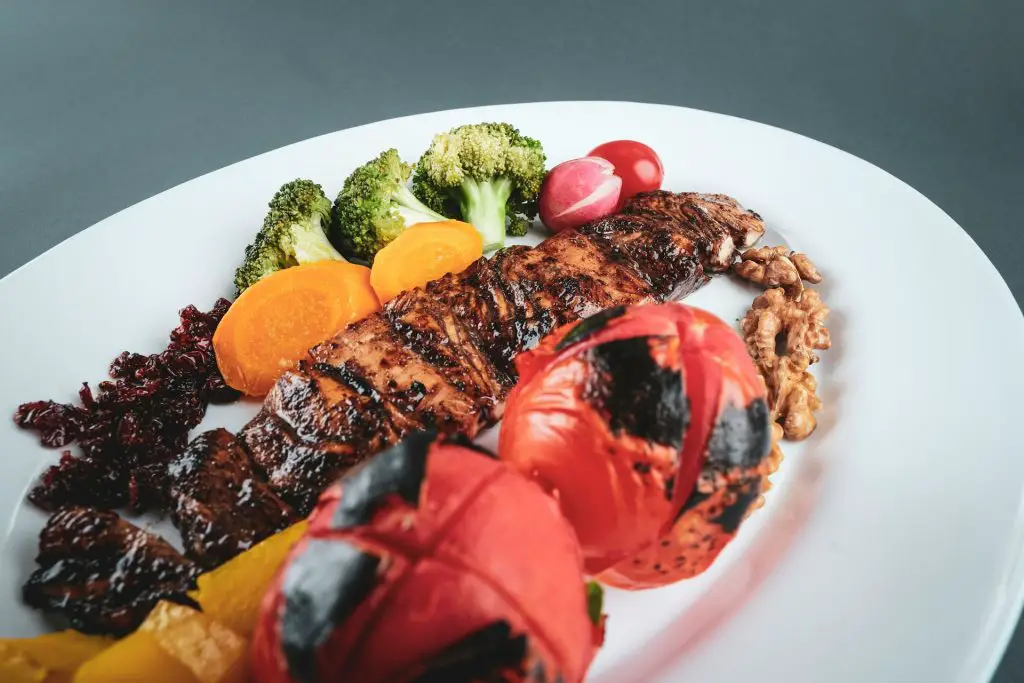Lebanese cuisine is a true embodiment of the country’s rich history, diverse culture, and vibrant culinary heritage. Renowned for its bold flavors, fresh ingredients, and intricate preparation methods, traditional Lebanese food holds a special place in the hearts and palates of people around the world. From mezze spreads to hearty stews, each dish tells a story of centuries-old culinary traditions and the fusion of various influences from the Mediterranean, Middle Eastern, and Levantine regions.
The Essence of Mezze:
A quintessential aspect of Lebanese dining culture is the mezze, a selection of small dishes served as appetizers or as the main meal itself. Mezze encourages communal dining and allows for a diverse range of flavors to be enjoyed in a single sitting. Common mezze dishes include hummus, baba ghanoush (smoky eggplant dip), tabbouleh (parsley salad), falafel (fried chickpea patties), and fattoush (mixed vegetable salad with toasted bread).
Savoring Grilled Delights:
Lebanon’s proximity to the Mediterranean Sea contributes to its abundant seafood offerings, often showcased in grilled dishes like samke harra (spicy fish), sayadieh (fish with rice), and shrimp kebabs. However, it’s not just seafood that takes center stage on the grill. Lebanese cuisine also celebrates the flavors of marinated meats such as shish taouk (grilled chicken skewers), kafta (seasoned ground meat), and kebabs made from lamb or beef.
Indulging in Hearty Stews and Casseroles:

Lebanese cuisine boasts a variety of comforting stews and casseroles that are perfect for satisfying appetites and warming souls. Among the most beloved is the iconic dish, kibbeh. Made from bulgur wheat, minced onions, and finely ground meat (often lamb or beef), kibbeh comes in various forms, including baked, fried, or simmered in a savory broth. Another cherished stew is fasolia bi zeit, consisting of green beans cooked with tomatoes, onions, and garlic, seasoned with olive oil and spices.
Bread as a Staple:
No Lebanese meal is complete without the presence of fresh, pillowy-soft flatbreads such as pita and markouk. These versatile bread varieties are perfect for scooping up dips, wrapping around grilled meats, or simply enjoyed alongside a meal. Manakish, a type of flatbread topped with za’atar (a blend of herbs and spices), olive oil, and sometimes cheese, is a popular breakfast or snack item enjoyed throughout Lebanon.
Sweet Endings:

Lebanese desserts offer a delightful conclusion to any meal, showcasing a harmonious blend of nuts, fruits, and floral essences. One of the most beloved desserts is baklava, layers of flaky pastry filled with nuts and sweetened with syrup or honey. Another favorite is knefeh, a decadent pastry made from shredded phyllo dough layered with cheese or cream, soaked in sugar syrup, and often flavored with orange blossom or rose water.
Influence of Regional and Historical Factors:
Lebanese cuisine has been shaped by a multitude of influences over the centuries, including those from neighboring countries, trade routes, and historical conquests. Phoenician, Roman, Ottoman, and French influences have all left their mark on Lebanese culinary traditions, contributing to the diverse array of ingredients, spices, and cooking techniques found in Lebanese cuisine today.
Traditional Lebanese food is a celebration of flavors, textures, and cultural heritage. From the vibrant colors of mezze spreads to the rich aromas of grilled meats and stews, Lebanese cuisine offers a sensory journey that captivates the palate and nourishes the soul. Whether enjoyed in the bustling streets of Beirut or at a family gathering halfway across the globe, the essence of Lebanese cuisine continues to unite people through the universal language of food.
Regional Variations and Seasonal Influences:
While Lebanese cuisine is characterized by its staple ingredients and traditional dishes, regional variations and seasonal influences add further depth and diversity to the culinary landscape. Coastal regions, such as Tripoli and Tyre, boast an abundance of seafood dishes, while inland areas like the Bekaa Valley showcase hearty meat-based stews and grilled meats. Moreover, seasonal produce such as figs, pomegranates, and olives are celebrated in various dishes, reflecting the rhythm of nature and the agricultural richness of the land.
Culinary Rituals and Social Customs:
Beyond the flavors and ingredients, Lebanese food is deeply intertwined with cultural rituals and social customs. Mealtimes are regarded as sacred moments for family and community bonding, where conversations flow as freely as the food. Lebanese hospitality is legendary, with hosts often going to great lengths to ensure their guests are well-fed and satisfied. Breaking bread together is not just a culinary act but a symbol of friendship, trust, and mutual respect.

Preservation of Culinary Traditions:
Despite the influences of globalization and modernization, Lebanese communities around the world remain committed to preserving their culinary traditions. Family recipes passed down through generations serve as a link to the past, keeping alive the techniques and flavors of traditional Lebanese cuisine. Moreover, initiatives aimed at promoting Lebanese food culture, such as cooking classes, food festivals, and culinary tours, play a vital role in fostering appreciation and awareness of this rich culinary heritage.
Challenges and Opportunities:
While Lebanese cuisine continues to thrive and evolve, it also faces challenges, both domestically and internationally. Economic instability, political unrest, and environmental concerns can impact the availability and affordability of ingredients, affecting the accessibility of traditional dishes for many Lebanese families. Additionally, as Lebanese cuisine gains popularity on the global stage, there is a need to ensure authenticity and integrity are maintained, while also embracing innovation and creativity to adapt to changing tastes and preferences.
Celebrating Diversity and Unity:
In essence, traditional Lebanese food is more than just a collection of recipes and ingredients—it is a reflection of the country’s cultural identity, resilience, and spirit of unity. Whether enjoyed in a humble home kitchen or savored at a bustling street corner eatery, Lebanese cuisine has the power to transcend borders and bring people together, fostering connections and understanding across cultures. As Lebanese communities continue to share their culinary heritage with the world, the legacy of traditional Lebanese food will endure as a symbol of joy, hospitality, and shared humanity.
Innovation and Fusion:
While rooted in tradition, Lebanese cuisine also embraces innovation and fusion, reflecting the dynamic nature of contemporary culinary trends. Chefs and food enthusiasts are exploring new techniques, ingredients, and flavor combinations, resulting in exciting reinterpretations of classic dishes. Whether it’s a modern twist on a traditional mezze spread or a fusion dish that combines Lebanese flavors with global influences, innovation adds an element of creativity and excitement to the culinary landscape while honoring the essence of Lebanese food.
Health and Sustainability:
In recent years, there has been a growing emphasis on health and sustainability within the food industry, and Lebanese cuisine is no exception. With its focus on fresh produce, lean proteins, and heart-healthy fats, traditional Lebanese food aligns well with modern dietary preferences for wholesome, nutritious meals. Additionally, Lebanon’s agricultural heritage emphasizes sustainable practices such as organic farming and responsible fishing, ensuring the continued availability of high-quality ingredients for future generations to enjoy.
Culinary Tourism:
Lebanon’s rich culinary heritage has positioned it as a desirable destination for culinary tourism, attracting visitors from around the world eager to explore its vibrant food scene. From bustling markets and traditional bakeries to upscale restaurants and street food vendors, Lebanon offers a diverse range of culinary experiences to suit every palate and preference. Culinary tours and cooking classes provide opportunities for travelers to immerse themselves in the culture and traditions of Lebanese cuisine, forging unforgettable memories and fostering cross-cultural exchange.
The Future of Lebanese Food:
As Lebanon navigates the challenges of the modern world while honoring its rich culinary traditions, the future of Lebanese food holds both promise and possibility. By embracing innovation, sustainability, and cultural preservation, Lebanese cuisine has the potential to continue captivating audiences worldwide while remaining true to its roots. Whether enjoyed in a bustling souk in Beirut or savored at a Lebanese restaurant halfway across the globe, the flavors of traditional Lebanese food will always evoke a sense of warmth, hospitality, and shared heritage for generations to come.




